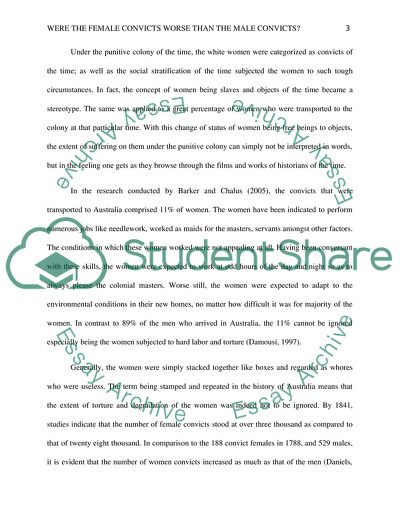Cite this document
(Were the female convicts worse than the male convicts Essay Example | Topics and Well Written Essays - 1500 words, n.d.)
Were the female convicts worse than the male convicts Essay Example | Topics and Well Written Essays - 1500 words. https://studentshare.org/gender-sexual-studies/1780387-debates-in-australian-history
Were the female convicts worse than the male convicts Essay Example | Topics and Well Written Essays - 1500 words. https://studentshare.org/gender-sexual-studies/1780387-debates-in-australian-history
(Were the Female Convicts Worse Than the Male Convicts Essay Example | Topics and Well Written Essays - 1500 Words)
Were the Female Convicts Worse Than the Male Convicts Essay Example | Topics and Well Written Essays - 1500 Words. https://studentshare.org/gender-sexual-studies/1780387-debates-in-australian-history.
Were the Female Convicts Worse Than the Male Convicts Essay Example | Topics and Well Written Essays - 1500 Words. https://studentshare.org/gender-sexual-studies/1780387-debates-in-australian-history.
“Were the Female Convicts Worse Than the Male Convicts Essay Example | Topics and Well Written Essays - 1500 Words”. https://studentshare.org/gender-sexual-studies/1780387-debates-in-australian-history.


